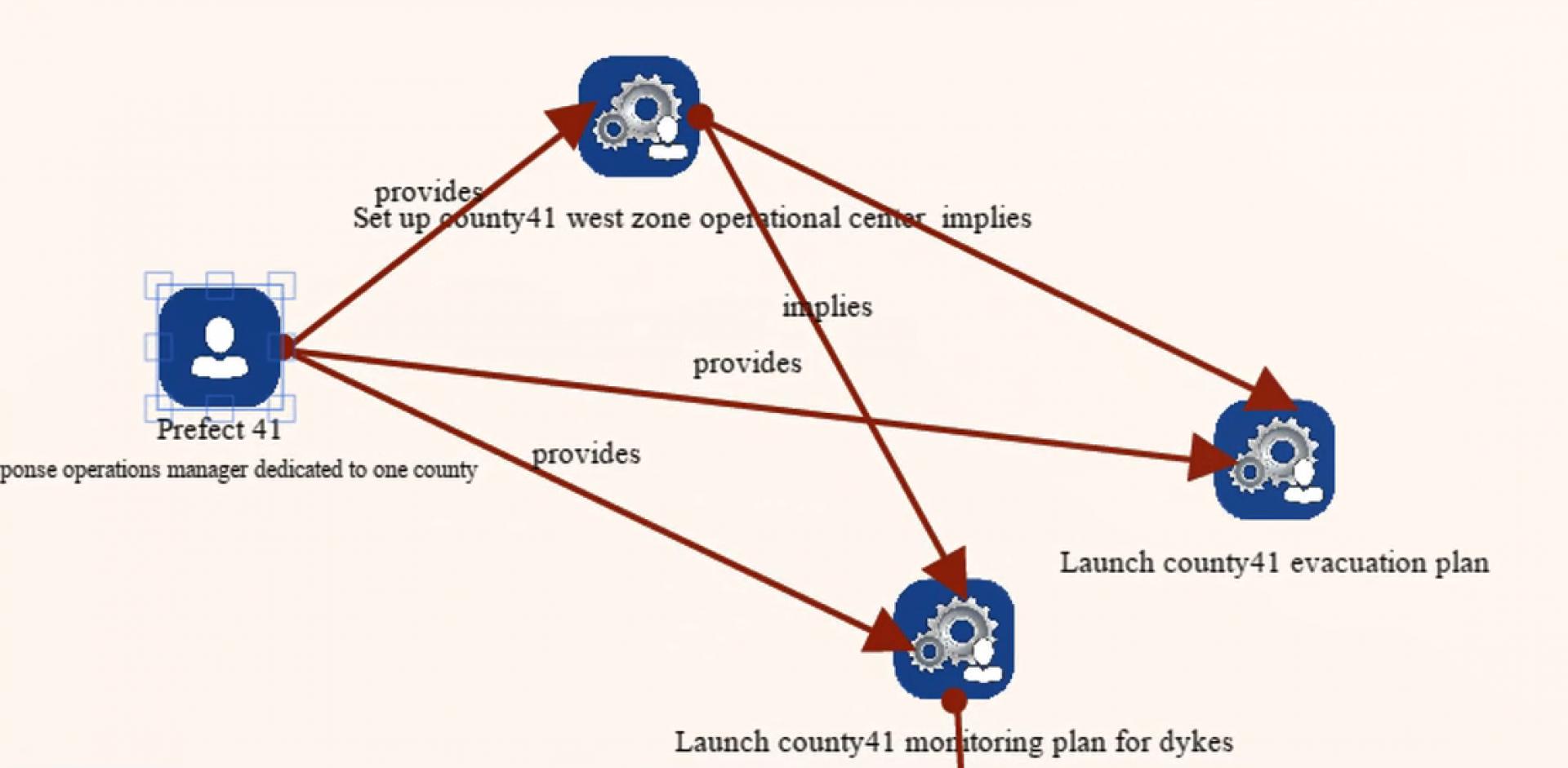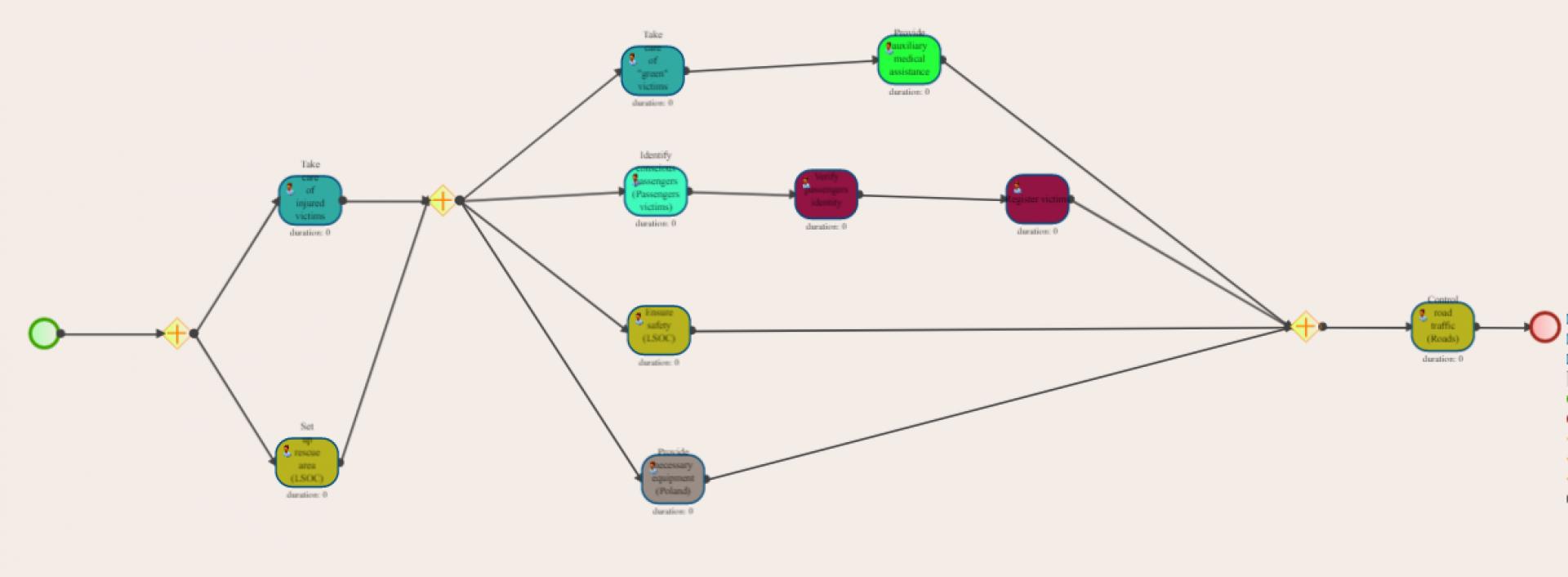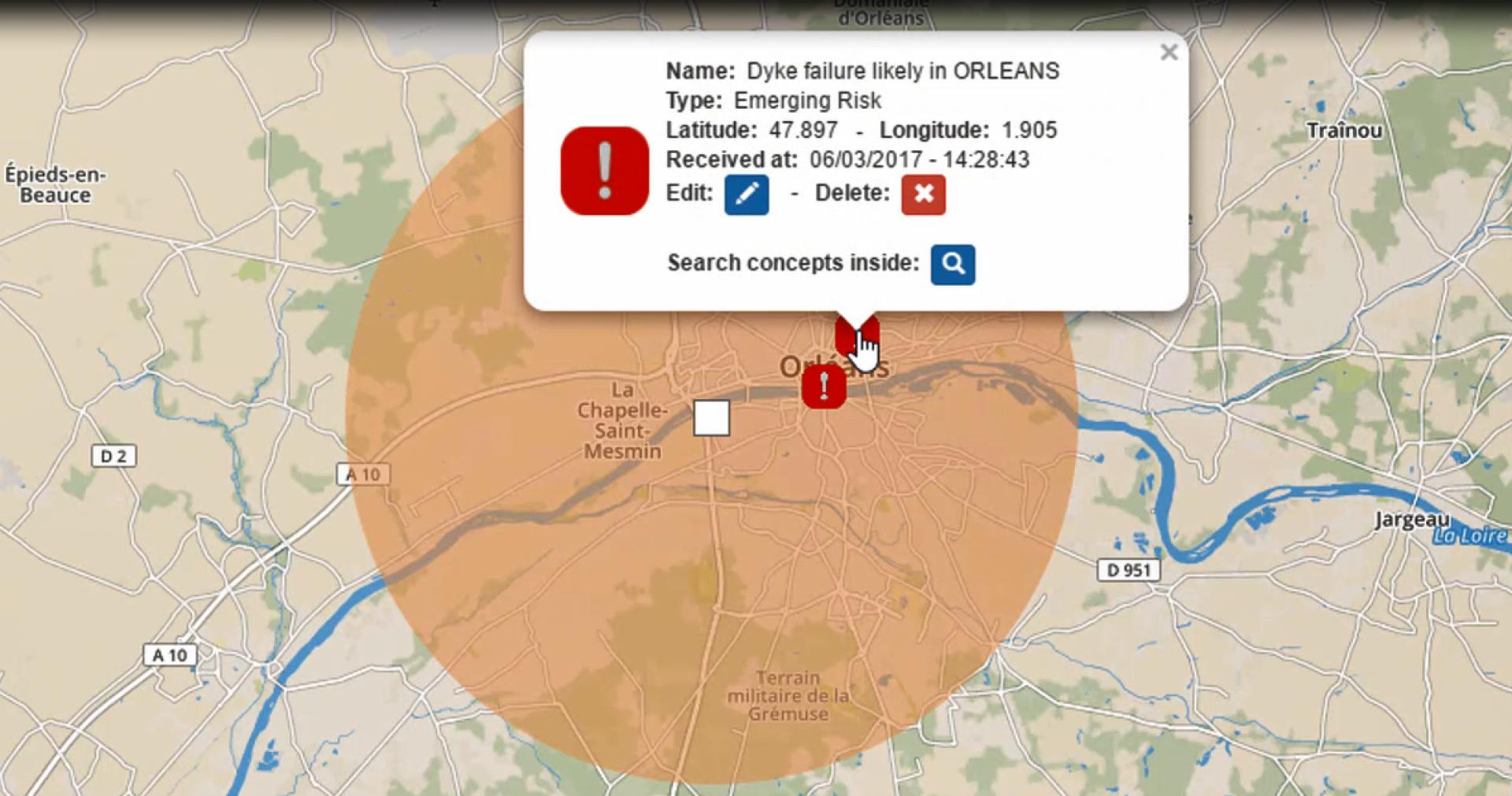Contact
Provider(s):
On the one hand, the information about the situation is brought thanks to the use of dedicated modelers: · Partner modeler: This modeler allows the crisis manager to model stakeholders that can be mobilized in case of crisis situation and their capabilities. · Context modeler: The models obtained with this modeler present characteristics of the impacted systems, including goods, people, intrinsic risks and any other specific feature. · Objective modeler: This third modeler is dedicated to describe precisely the crisis situation. The obtained models contain mainly objectives to satisfy (as missions) which are basically based on effects to treat (like injured people to evacuate or fire to extinguish) or risks to prevent (like building collapse or tank explosion). This model could be seen as a map on a GIS. On the other hand, the IO-DA embeds an inference engine, which allows the user to apply different strategies to deduce, from the previous models, collaborative process models. Regarding deduction strategy, for the moment, only one simple strategy has been implemented as a set of business rules to deduce collaborative process models, but the current work is about implementing more complex strategies embedding doctrine and law principles.
Supported Use Cases
Fire
Shipwreck in baltic sea
 |
Portfolio of Solutions web site has been initially developed in the scope of DRIVER+ project. Today, the service is managed by AIT Austrian Institute of Technology GmbH., for the benefit of the European Management. PoS is endorsed and supported by the Disaster Competence Network Austria (DCNA) as well as by the STAMINA and TeamAware H2020 projects. |


